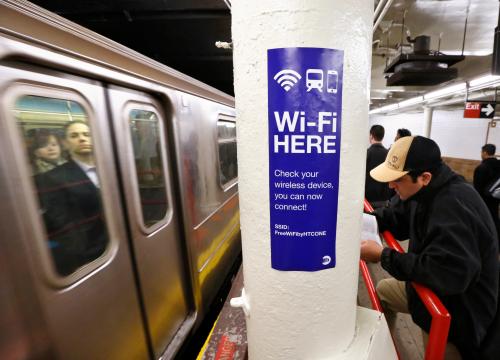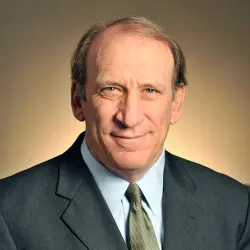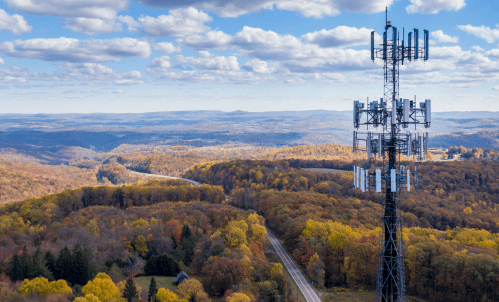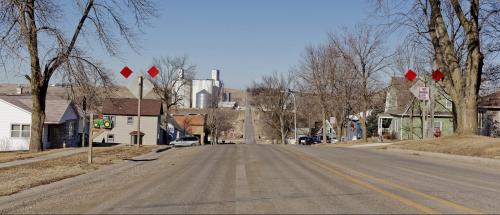This is the first of three blogs discussing the state of broadband policy as a new administration and Congress begin. Drawn from three speeches I gave shortly before and after the election, it argues that “making America great” requires great broadband, and it promotes an infrastructure initiative to address current broadband shortfalls. The second piece will look at how broadband policy is likely to play out in a new administration. The third will focus on the role of cities in assuring that communities have the foundation they will need to thrive in the 21st century global information economy.
One of the most powerful metaphors in American politics is John Winthrop’s memorable sermon urging his fellow Puritans to create a “city upon a hill.” Many presidents have drawn on that vision, but none more memorably than President Reagan, who, in his farewell address, described his American dream as a city “teeming with people of all kinds living in harmony and peace; a city with free ports that hummed with commerce and creativity. And if there had to be city walls, the walls had doors and the doors were open to anyone with the will and the heart to get here.”
If that vision animates the new administration, then it should look to broadband policy for a major area of such opportunity. If America is going to be or continue to be “great,” it has to have great, world-leading broadband.
Building broadband infrastructure, as with any infrastructure, raises three questions: how to finance it, what projects are eligible to receive the funding, and how the funds are distributed. As to the first, the Trump campaign laid out an approach that essentially uses market tax credits to promote private-sector investment in infrastructure. Ironically—at least to me—the approach is structurally similar to the framework for financing next-generation communications and clean energy networks that Reed Hundt and I proposed in our 2012 book, The Politics of Abundance, though there are some significant differences in details.
The other issues—the appropriate criteria for eligibility and how to distribute the funds—are linked. I can think of seven potential approaches, none of which are exclusive and many of which are complementary:
- Target anchor institutions—schools, libraries, health facilities, and other community institutions—to assure they have abundant bandwidth.
- Target middle-mile facilities—the networks between the internet backbone and the local, final connection– to lower operating costs for multiple providers in low-density areas.
- Target final-mile facilities, with a focus on communities that lack access to a network offering a certain speed threshold. One could build on the Federal Communications Commission’s current Connect America Fund structure to accelerate a next-generation buildout in rural areas, something I’ll discuss in more detail in a future post.
- Target next-generation 5G mobile networks and the Civic Internet of Things to bring intelligence to the water, sewer, electricity, and transportation grids underlying our communities. Both these new platforms will share a need for, and operate over, a fiber network. The infrastructure fund could accelerate such deployments either through a model cities approach of funding demonstration projects or by funding many projects to create scale and standards.
- Target digital enterprise zones. The new FCC Chair Ajit Pai recently proposed to use broadband to improve the economics of areas of persistent poverty. Pai deserves praise for both prioritizing government resources to attack poverty and laying out a detailed proposal. While I have my questions on the specific proposals, I support the direction Pai articulated and hope any infrastructure plan adopts his agenda.
- Pursue a state block grant strategy. Distributing the funds through state block grants that rely on a formula, such as per capita funding, may prove a productive path, particularly if the states have broad discretion for eligibility.
- Pursue a city block grant strategy, but rather than distributing the funds on a per capita basis, as with states, funds would be distributed to target cities that adopt certain best practices of deployment.
There are other tactics the federal government could use in leveraging an infrastructure program to improve broadband availability. For example, the program should require that any project include a broadband conduit—the tube through which the fiber runs–and develop a process for managing requests by broadband providers to access and use that conduit.
But the federal government cannot do all this on its own. Local governments and their policies play an integral role in advancing shared objectives, including accelerating deployment of next-generation networks and improving the economic value from local networks once they’re in operation. An infrastructure plan will also require bipartisan consensus, which today seems much easier to build at the local level.
Of course, a world-leading broadband network alone will not make a shining city, but at some point in the near future a broadband network providing affordable, abundant bandwidth will be essential to building a better life for ourselves and the generations to follow.
As Yogi Berra said, predictions are tricky, particularly about the future. But these two predictions are 100 percent certain: America will not be great if it does not have great broadband, and we will not get it if we do not work together.







Commentary
Make America great with great broadband
February 7, 2017